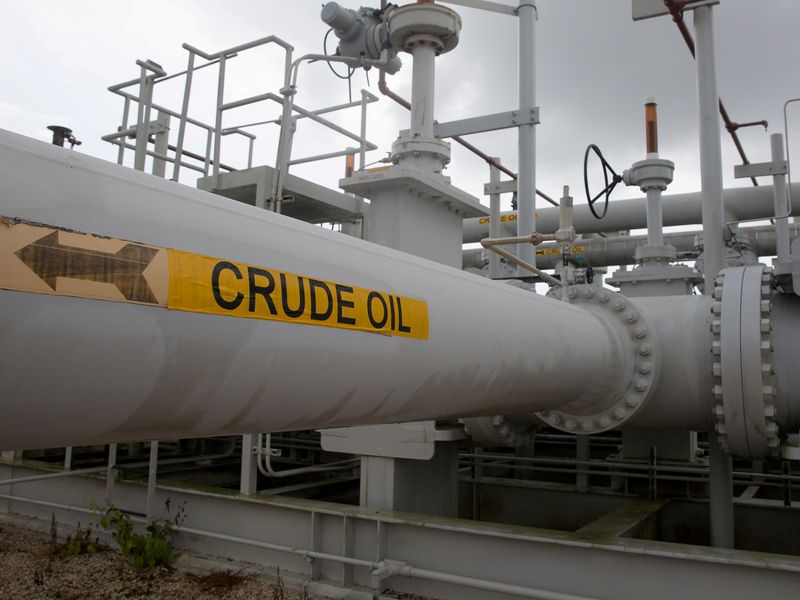By David Gaffen
(Reuters) -U.S. crude and fuel stocks fell in the latest week, driving key storage hubs to multi-year lows as strong demand had refiners and other users paying dearer prices to secure supplies.
Oil prices have soared since Russia invaded Ukraine and was hit with sanctions that disrupted oil trade worldwide in markets already stressed by tight supplies. As a result, buyers are pulling barrels out of stock and the United States is tapping strategic reserves.
Crude inventories fell by 2.6 million barrels in the week to Feb. 25 to 413.4 million barrels, the U.S. Energy Information Administration said. Analyst had expected a 2.7 million-barrel increase.
The key Cushing, Oklahoma hub saw its stock fall by 972,000 barrels to 22.8 million barrels, its lowest since September 2018. Cushing is the delivery point for U.S. crude futures, and while it has receded in importance as the U.S. export market has developed, it is still considered an important indicator for freely available supply.
"The Cushing situation is starting to get pretty grim. You can easily make the argument that crude oil should be bid without looking at any other factor," said Robert Yawger, executive director of energy futures at Mizuho.
The U.S. Strategic Petroleum Reserve's inventories fell to 580 million barrels, lowest since August 2002 - and that was before the Biden Administration, in conjunction with the International Energy Agency, which represents numerous large consuming nations, said it would release 60 million barrels of reserves in coming months.
Distillate stocks - jet and diesel fuel - also fell, dropping by 573,000 barrels to 119 million barrels, lowest levels since November 2019.
U.S. gasoline stocks fell by 468,000 barrels in the week.
Refinery crude runs rose by 152,000 barrels per day in the last week, EIA said, boosting utilization rates by 0.3 percentage points to 87.7% of capacity.

Net U.S. crude imports fell by 2.2 million barrels per day, EIA said. Overall crude exports jumped to 3.8 million bpd, as international benchmarks are priced higher than U.S. barrels, making U.S. exports more attractive to other buyers.
As of 11:14 a.m. EST (1614 GMT), Brent crude was up $4.39 a barrel, or 4.2%, to $109.36, while U.S. crude gained $3.59, or 3.5%, to $107.